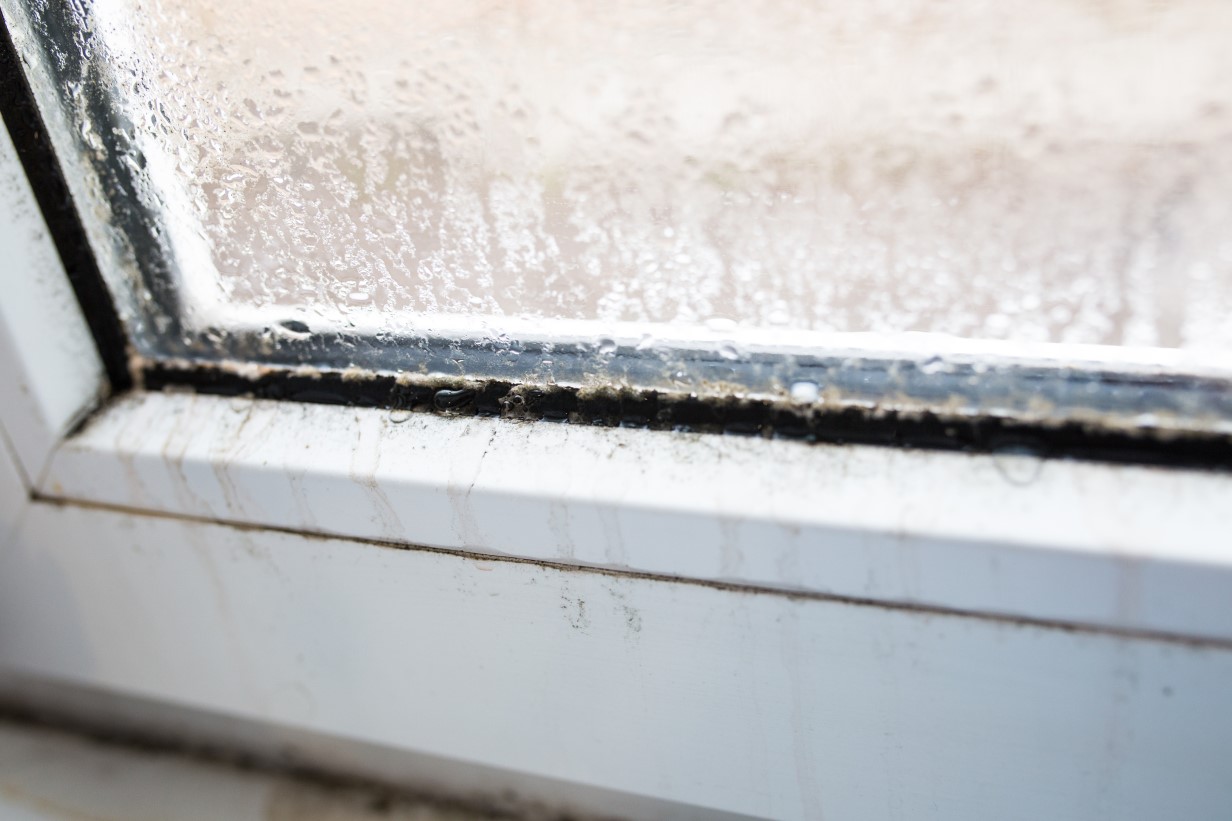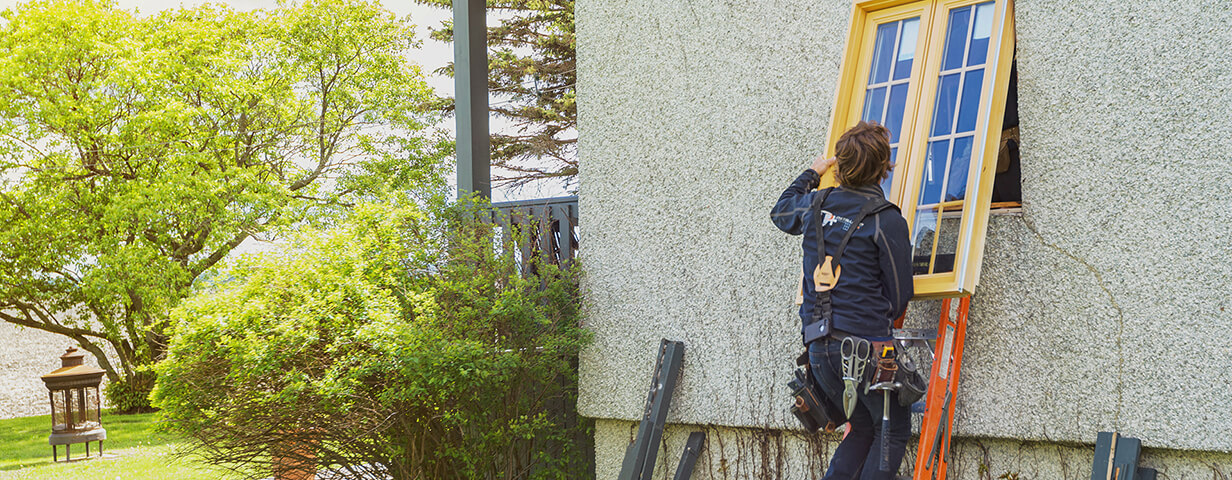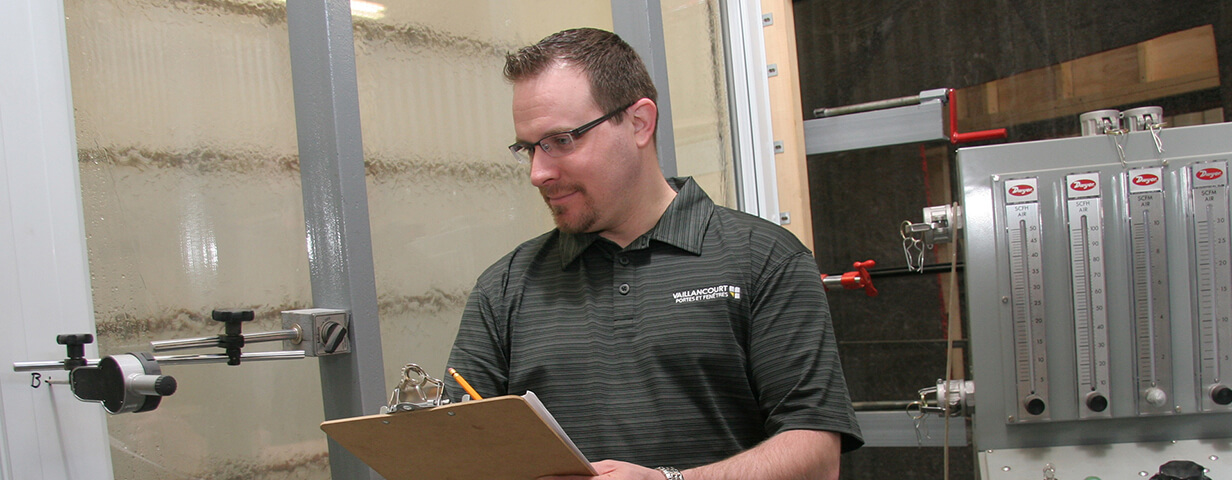Mold: you don’t want to find it in your fridge, much less anywhere else in your house. This is because mold growth can pose a genuine health hazard. Are you letting the windows in your house turn into doorways allowing mold to enter your home? Here are some useful tips for preventing mold from growing around your windows.
Good ventilation is essential!
Mold growth is most often linked to moisture buildup. This makes it important to track the humidity level inside your house. It should ideally be around 30% and should not exceed 50%. Keep in mind also that as the outside temperature drops, the relative humidity indoors should be adjusted as well. (Source: APCHQ)
|
Outside temperature |
Target maximum relative humidity at an indoor temperature of 21°C |
|
-28°C or colder |
15% |
|
-28°C to -23°C |
20% |
|
-22°C to -17°C |
25% |
|
-16°C to -12°C |
30% |
|
-11°C to -6°C |
35% |
|
-5°C to +4°C |
40% |
Many factors can contribute to moisture problems, such as water use (e.g. shower, bathtub, sink) and the operation of certain household appliances (e.g. washer, dryer, dishwasher). Some rooms are more prone to moisture as a result, and it is very important to maintain good ventilation in bathrooms, kitchens and bedrooms to ensure the air is renewed regularly.
Using a dehumidifier, bathroom fan or range hood fan can help to reduce the humidity level inside your home. If you want to bring fresh air into your house without having to open doors and windows and let precious heat escape, mechanical ventilation with heat recovery is an efficient long-term solution. Using a heat recovery ventilator (HRV) system, you can recover 60% to 80% of the heat generated in your home while also circulating fresh air.
Besides air circulation, there are many other tips for regulating the humidity level in your house. Keeping the air moving inside your home is the key to maintaining a healthy, mold-free environment!
Removing condensation can help
If your home has poor air circulation, then moisture buildup can cause condensation on your windows. This condensation can lead to the pooling of stagnant water on window frames and sills. It is important to monitor closely for signs of water accumulation, as this can damage your window frames. If you detect this problem, you should dry the windows off by wiping them down with a cloth.
You can also clean the window surface thoroughly using a water-vinegar solution or gentle detergent and then wipe dry once again. Do not use bleach for this task as its corrosive properties could damage your window frames.
Of course, even if you clean your window frames every day, if you don’t resolve the humidity issue, then the condensation will just keep coming back. One strategy that helps to keep condensation at bay is to keep curtains and blinds open during the day to allow warm air to come into contact with the windows.
The insulation solution
Better insulation is another excellent weapon for winning the war against condensation caused by thermal shock. This is because condensation occurs when warm, moist air comes into contact with cold windows. Energy-efficient windows insulate more effectively, preventing the interior panes from getting as cold.
Keep in mind that condensation due to excessive humidity may occasionally increase after replacing your windows simply because the new windows are insulating your home more effectively. If the old windows were poorly insulated, then the resulting air infiltration was helping to circulate the air. This means that you need to find another way to keep your home ventilated in order to reduce humidity.
If you’ve tried everything and still see mold developing, you can remove surface mold using vinegar, alcohol or a mold cleaning product. If you have conditions that make you vulnerable to the health risks caused by mold, then someone else should clean your window frames. Remember that even regular cleaning does not prevent mold from growing. If this problem worsens to the point of getting uncontrollable, you should call professionals who can assist in diagnosing and addressing this problem.








